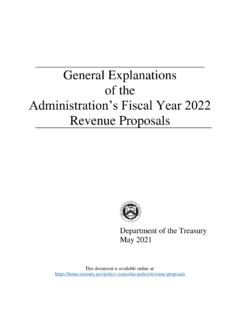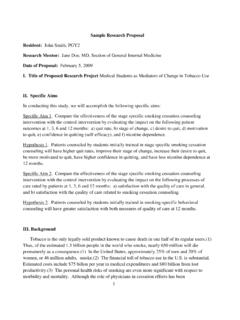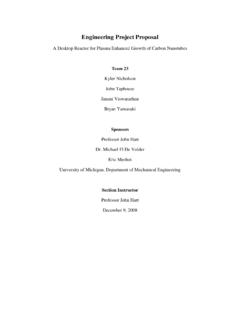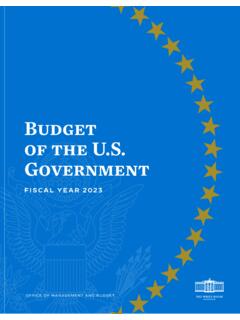Transcription of SAMPLE GRANT PROPOSAL - University of Indianapolis
1 SAMPLE PROPOSAL 10/2014 SAMPLE GRANT PROPOSAL The elements described here are intended as a starting point from which to develop a GRANT PROPOSAL . Contact the Office of Grants & Sponsored Programs at 781-5766 for assistance with PROPOSAL development. 1. Title Page. ( Application Form , or Cover Sheet ) 2. Table of Contents. ( Contents ) 3. Abstract. ( Executive Summary, Project Description, Project Summary) Abstracts are often the most important part of a PROPOSAL as it is a reviewer s first impression of a PROPOSAL . Includes a clear and concise one-page description of the project emphasizing the objectives, needs for project, plan for execution of project, and measurable outcomes. 4. Problem Statement.
2 ( Needs Assessment, Needs Statement) Defines a problem addressed by implementation of the proposed project. Considers community, organizational or systemic implications. Demonstrates need through data analysis. Explains relevance of project to funder s mission. Includes primary and secondary target populations and means of access. 5. Goals and Objectives. ( Expected Outcomes, General Objectives, Specific Outcomes) Goals are a general statement of what the proposed project will accomplish. Identifies expected outcomes as relate to short-term and long-term goals. Describes measurable outcomes for the proposed project. (Evaluations report the success of an entire project. Objectives report the success of a specific part of a project.)
3 Evaluations are often comprised of many objectives that include measurable outcomes.) Normally includes at least three (3) objectives, with at least three (3) activities for each objective. Activities may be duplicated between objectives. 6. Project Description. ( Action Plan, Management Plan, Operating Plan, Project Narrative, Research Design) Describes the methods and procedures, plan of work, project activities, and timelines of the proposed project. 7. Evaluation. ( Assessment of Outcomes, Formative Evaluation, Outcomes) Explains how success of the proposed project will be measured, which is in direct correlation to project objectives. Includes description of data collection, documentation, and analysis. 8.
4 Dissemination. ( Distribution of Results, Replicability, Transferability, Utilization Plan) Outlines plans for distribution of evaluation via presentations, publications, technical reports, or similar methods. 9. Qualifications. ( Biographical or Bio Sketches, Key Personnel) Identifies key personnel involved in development and implementation of the proposed project. Curriculum vitae and/or position descriptions may be included under Appendices as supporting documentation. Illustrates each individual s qualifications and role in successful implementation. 10. Resources. ( Equipment and Facilities, Space Requirements) Explains availability and accessibility of equipment, facilities, and/or other resources necessary for successful implementation of the proposed project.
5 SAMPLE PROPOSAL 10/2014 11. Budget. ( Financial Requirements, Fiscal Resources, Project Costs) Details expenses in commonly-used categories such as personnel, services, supplies, equipment, and travel. A Includes a Budget Justification brief explanation of relevance of expenses to proposed project s success. 12. Appendices. ( Attachments, Background Materials, Supporting Documents) Additional materials requested by the potential external funder or included by the PROPOSAL writer. Appendices may include bibliography, board rosters, course descriptions, curriculum vitas, letters of support, membership lists, and so on. EXAMPLES OF SELECT SECTIONS Problem Statement. In 2008 approximately 450 youth were on probation in Main County.
6 Seventy-seven (77) of those youth were served by Juvenile Alternatives in 2008, including youth who were referred for assessment purposes only. Juvenile Alternatives addresses risk factors, which ..psychological programs in the family of origin, and low levels of personal achievement..Male and female adjudicated juvenile offenders between the ages of 11 and 17 who have committed at least one (1) felony offense and are in need of a closely supervised, highly-structured program that emphasizes education, monitoring, recreational activities, and work. Project Description. The mission of Juvenile Alternatives is to effect positive change in a high risk juvenile population through high structured, community based programming committed to the prevention of further juvenile offenses and the protection of the community.
7 Juvenile Alternatives is a dispositional alternative for youth in need of a highly structure ..Contact between staff and the offender will become more or less frequent, dependent upon the offender s improvement. Project Goals & Objectives. To decrease the overall crime rate and increase overall public safety in Main County. To decrease the overall recidivism rate among juvenile offenders in Main County. To decrease the overall number of juvenile commitments from Main County to the Indiana Department of Correction. Objective 1 To maintain a component success rate of 75% or more for all offenders participating in Juvenile Alternatives throughout the project period. Activity 1 Conduct pre and post YLS/CMI on program participants Activity 2 Provide comprehensive case management for program participants.
8 Activity 3 Conduct evaluations on participant s progress midway through term of sentence. Activity 4 Provide regular status reports to criminal justice and school officials regarding program participant s progress Sustainability. Juvenile Alternatives has received County Commissioners, upon review of the proposed project s final evaluation and report, has tentatively offered an earmark





